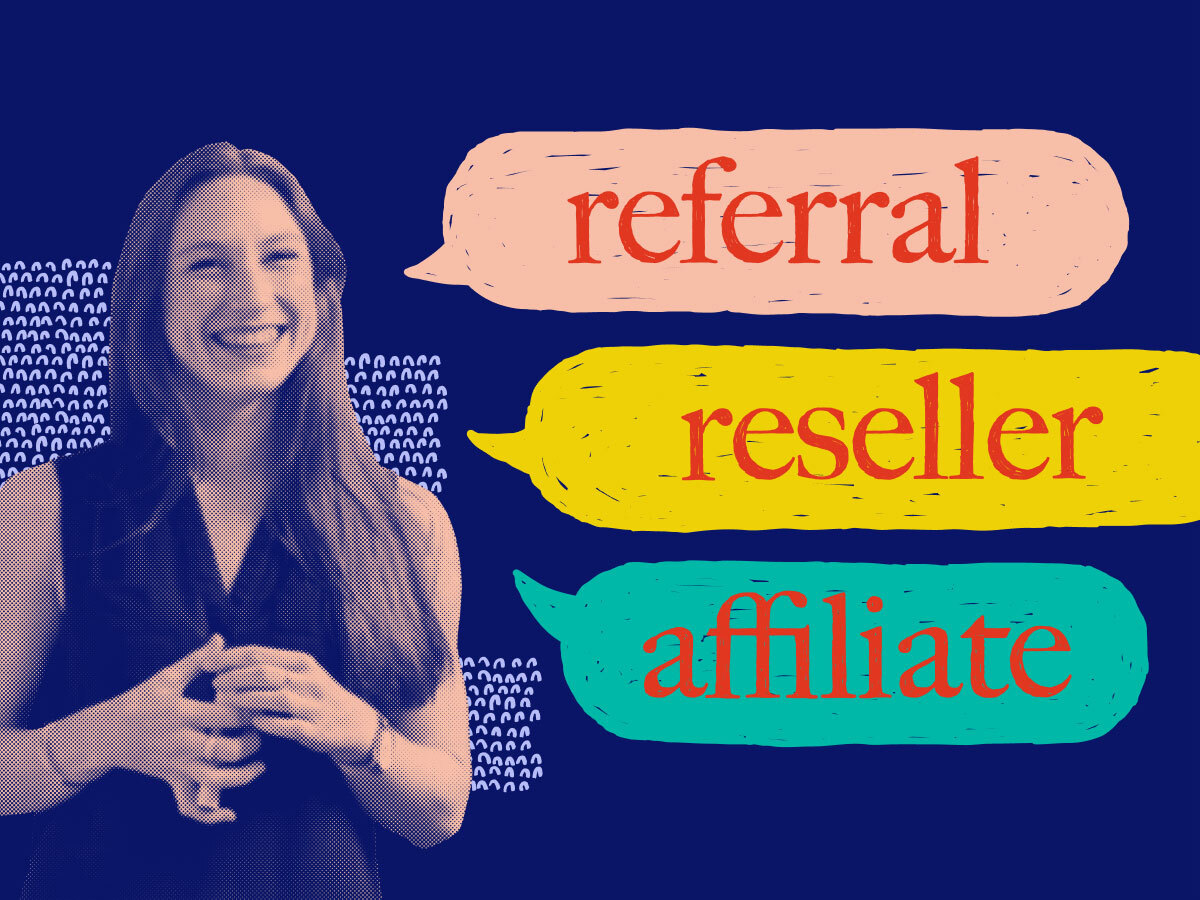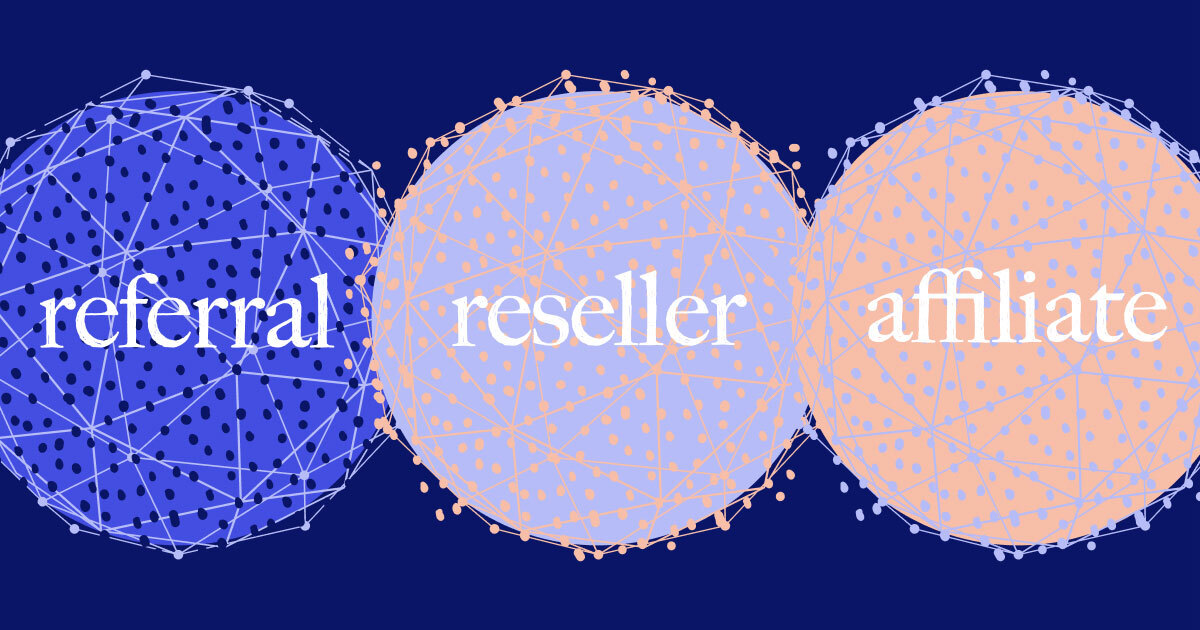More than ever, today’s B2B buyers are looking to review sites, marketplaces, agencies, and resellers to help them decide what software to buy. How do you reach them? The secret is partnerships.
Implementing a partner program ensures that you take advantage of these indirect channels. It’s not surprising then, that partnerships are becoming more popular among fast-growing software companies looking for ways to drive more revenue. Since there are limits to how quickly you can scale your go-to-market team, working with partners enables you to reach a much wider audience than you would alone while maximizing your budget. Plus, a partner program may even help you reach larger customers if moving upmarket is a goal for you.
That might all sound great, but If you’ve never worked with partners before or are just getting started, you probably have some questions. Like How do I know what kind of partner program is right for me? What do I need to get started? How can I make sure my partners are successful? In this post, we’ll provide an overview of the three main types of partner programs, how to pick the right one for you, and how to set up each type for success. Let’s break it down.

When to launch an affiliate program
Overview: Affiliate partners drive traffic to your properties through tracked links, and earn a cut of your profits when that traffic converts.
Success stories: Jungle Scout, Looka
Start here if: You want to experiment with a partner program without a big upfront investment.
If you’ve never worked with partners before, an affiliate program is one of the easiest types to get up and running. It works like this: You give your partners an affiliate link which they can share through their social media or other channels (such as an email newsletter) and when members of their audience make a purchase, they earn a percentage of the revenue. You can start very small—if you can provide a trackable link and have a way to pay your partners for conversions, you can run an affiliate program.
To get started, you’ll first need to define the type of partner persona you’re looking for. That is, what kind of partners are a good fit to work with you. This group will most likely come from people who already link to your website. Think software partners, review sites, influencers, and so on. You can start by managing your program in spreadsheets, though as you grow, you might want to consider choosing a partner platform—a tool that provides an interface for your partners to sign into, track their sales, communicate with you, and collect their rewards.
In terms of rewards, you can keep it simple with a single type of reward, or you can build out rewards tiers. (You can also revisit tiering as an option as your program grows). For instance, maybe your partners start by earning 10% on all sales, but once they hit a certain dollar value in sales each month, they can then earn 20%. These kinds of incentives can be highly motivating, so tiering can be extremely effective for rewarding and retaining your best partners.
In order to set your partners up for success, you’ll want to create a centralized resource hub (if you’re using a partner platform, you can host this in your partner portal). Since affiliate partners are responsible for driving top-of-funnel growth, you don’t need to give them super in-depth product training like you would with resellers, but you’ll still want to equip them with the basics. We recommend building out your resources hub with the following:
- Partner program FAQs (should outline reward tiers, if you’re using them)
- An automated email welcome flow for new partners
- Brand logos and colors
- Sales one-pagers
- Ready-made social images
- Any other marketing materials you think might be helpful
But don’t feel like you need to perfect everything before you launch. You can refine your training materials as you grow and partners give you feedback.
When to launch a referral program
Overview: Referral partners send qualified leads for your team to close, and earn a percentage of the revenue when a deal goes through.
Success stories: Teamwork
Start here if: You already have a network of customer advocates acting as informal partners sending you leads.
A referral partner program is a great place to start if your happy customers are already referring their connections to your business. That’s essentially what a referral program is—partners qualify leads on your behalf, send them your way, and earn a cut of your revenue when your sales team closes them. They might do this through referral links (like in an affiliate program, except much more targeted) or lead submission forms, which sends the prospect’s details directly to your sales team. If your customer advocates are already sending you leads, creating a referral program is an excellent way to reward them and incentivize even more referrals.
In terms of the time and resources to get started, a referral partner program requires a bit more effort to get off the ground than an affiliate program, but the rewards can be well worth it. You’ll need to vet your partners more thoroughly since you’re trusting them to prospect on your behalf.
To that end, you’ll want to prepare more in-depth resources to educate your partners and help them succeed. In addition to the basic resources we recommended building out for an affiliate program (see list above), you’ll also want to consider compiling more comprehensive marketing materials. Here are some we recommend:
- Detailed product guides
- White papers
- Data sheets
- Technical specifications
- Product demo recordings
- Competitive sales sheets
- Email templates your partners can send to prospects
- Sales scripts
If you don’t already have an informal network of customer advocates sending you leads, it might make more sense to create an affiliate program first to start cultivating your network. As you build your affiliate program, you’ll get the chance to get to know your partners better and form strategic relationships for a future referral program. Many of the companies we work with find that referral partners emerge organically from their top-performing affiliate partners. Once you’ve built a solid foundation of affiliates, you can start to “graduate” your partners to the next level.

When to launch a reseller program
Overview: Reseller partners sell directly on your behalf and earn commission.
Success stories: Aircall
Start here if: You already have (formal or informal) partners you work closely with, and you’re willing to put in the time to train them as certified resellers of your product.
A reseller partner program is the most involved type of program in terms of time and financial investment. With this program, you’re outsourcing your entire sales process to a reseller—essentially trusting them to be your account executives (AEs). They're qualifying leads, running through the entire sales process for your product, and closing deals. In order for your reseller partners to be successful, you’ll need to invest significant internal resources into designing training, building out resources, and creating a compelling rewards structure.
When selecting partners for a reseller program, it’s important to already have an established relationship with them so you know you can trust them to sell on your behalf. That’s the primary reason why most companies have some kind of partner program in place before starting a reseller program. However, you could theoretically start with this type of partner program if you already have some well-established, informal partners that you trust. More likely though, you’ll be “graduating” referral partners into resellers.
Before launching a reseller program, you’ll want to create comprehensive resources and training. Since they’re selling on your behalf, you want your partners to be just as well equipped to sell your product as your own AEs. In addition to the resources you would use for affiliate and referral programs, we also recommend building out the following:
- Sales decks
- Co-marketing materials
- Pre-built social campaigns
At this phase though, it’s less about the resources (chances are, you’ve built most of them already) and more about providing support to your partners. You’ll want to provide support systems throughout the sales process, but especially think about how you’ll provide pre- and post-sales technical support. Specifically, you may want to assign dedicated partner managers to each of your resellers, so they always have someone they can turn to for questions and advice.
You may also want to consider creating a certification course (which you can do through PartnerStack’s learning management system (LMS) to help your sellers learn your product offerings inside and out. Our research has shown that partners who go through LMS training receive 6x more revenue. Training is key to having the highest-quality reseller partners.
To encourage your resellers to participate in training, you can also incorporate your certifications into your rewards structure. For instance, you might set up your rewards so partners unlock certain rewards only after completing certain training.
Scaling your partnership program
While you can eventually grow your partner program to include multiple types (or even all three), we recommend starting with one. Once you have a demonstrated history of success, you can consider scaling your program to incorporate other types of partners.
How do you know when to scale up? Sometimes, it just makes sense. For instance, maybe you've been running an affiliate program for quite some time and you’ve built strong relationships with your top partners. Maybe they start sending you qualified leads directly because you’ve developed that kind of relationship with them. At that point, you’re just using a very manual process—if you started to use lead forms, you would make the process easier for you and your partners. By launching a referral program, you’d be able to streamline what’s already happening.
Other times, you’ll need to look for clues in your business that the time is ripe to expand. Here are some questions to consider:
- Is your current program showing a good growth trajectory?
- Have you built relationships with your top performers?
- What else is going on in the business? (Ex. Have you recently gotten a new funding round?)
- Do you have the resources to support an expansion?
- Do you have executive buy-in?
- How will your partner personas change as you expand to new types of programs? Can you identify people like that among your existing partners?
As we alluded to earlier, you can look to your top-performing partners as candidates for new types of programs. You can “graduate” partners from one type of program to another (usually affiliate to referral, or referral to reseller, though other moves are also possible). And since many partners are multi-program partners—that is, they work with other vendors—they might already have experience in other types of programs, you’ll just need to train them on your product.
Pick your partnership program
Together, you and your partners can play a major role in each other’s success. It’s just a matter of figuring out the best structure for your program. Once you’ve identified the right type for you, you can get to work building out your resources, creating your rewards tiers, and reaching out to promising candidates. Soon enough, the revenue will be rolling in.







.jpg)



